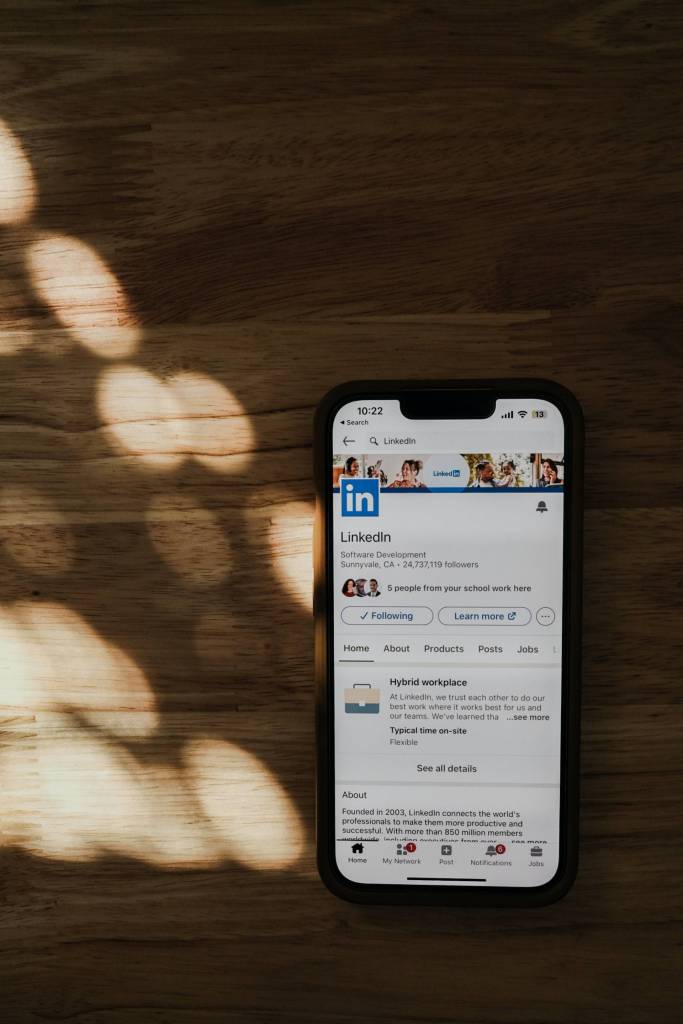5 Steps to Reach Your Career and Life Goals
Step 1. Know What You Bring to the Table and What Drives You!
In order to bridge the gap from college to your first career you need to know yourself; what do you bring to the table and what drives you, what you value and what you can do that adds value. All of this should be succinctly crafted into a personal mission statement. I’d like to quote Eric Hellweg who writes for the Harvard Business Review. He asserts that most companies, regardless of their sectors, have a mission statement. And most are awash in jargon and marble-mouthed pronouncements. Worse still, these gobbledy-gook statements are often forgotten by, misremembered, or flatly ignored by frontline employees.
You can’t anticipate every conflict of interest employees might encounter. But, you can increase the likeliness that employees act in the company’s best interest if you provide clear guidelines. A well-crafted mission statement serves as a “true north” for all employees to follow and I contend that it can do the same for individuals.
Surprisingly, most students spend approximately 18 years in school and less than 30 minutes crafting their resume or personal mission statement. In fact, most of my clients have never written a mission statement at all. I think that people have a hard time defining their personal mission and making it authentic and memorable for perspective employers. It’s no surprise that many people make costly, painful mistakes in their life and career decisions, as they don’t have a clear focus for their goals, summarized in a personal mission statement. Please see my earlier blog that explicitly teaches how to construct a personal mission statement – Strong Personal Mission Statement Works Like a Career GPS.
Step 2: Pick a Viable Industry; Interview a Key Player
For those of you who already know your “passion” you can relax for a moment while I address the majority of the population who typically is not certain what their life calling is. Although some people, like Dr’s, writers, ministers, dancers, Olympic athletes may know their passion from a young age, the rest of us need a strategy for creating a career path plan that will match our interests, skills and abilities to an industry and a specific job that interests us. Each job will ideally afford us opportunities to hone our skills so we can help add value somewhere! I contend that one’s passion can evolve overtime, once a person sees he is adding value at work and is appreciated for his contribution. I write in more depth about this in one of my blogs that your passion can follow you – Hard Work, Marketable Skills, Feeling Appreciated Leads to Passion!
That being said, the next step after writing your mission statement (which can change thousands of times across your career) is to PICK A VIABLE INDUSTRY that interests you and interview a key player there. This is called an informational interview and it should give you a better sense about the demands and the benefits of a particular job. I refer to this method as reverse career path planning as it requires that you do exactly that: “Reversing the career planning process or “reversed career path planning” which involves envisioning your desired finish line and, based on that, figure out how to run the race. Certain industries and careers are “hot” as they show promise for the coming decade. (Career experts predict increased needs in these fields due to anticipated demographic changes or predicted population shifts. Renewed focus on conservation and alternative energy sources or expanding technological advances also influences “hot” careers).
Some great resources which identify hot jobs for the next decade include; the AIRSdirectory.com, Bigtimejobs.com, CareerXroads.com, Simplyhired.com, Jobster, Ward’s Business Directory, The Million Dollar Directory, 100 Fastest Growing Careers and my personal favorite, The Occupational Outlook Handbook, (the profiles featured here cover hundreds of occupations and describe What They Do, the Work Environment, How to Become One, the Pay, and more. Each profile also includes bureau of labor statistics for employment projections.
Health Care, Software Design and development and information technologies, education, auditing & factoring, green careers, energy biotechnology & biosciences, entrepreneurial option are just some examples of hot careers for the next decade. I suggest you all do some of your own research on what will be hot for the next decade and beyond so you target your search in an area that will be sustainable and provide you with experience that you can leverage for future career opportunities!
Step 3: Pick a Sustainable Place to Live Where You’ll Be Happy
Here are some relevant questions to ask yourself prior to choosing a location: Do I want to walk or drive to work? Do I want to be able to take interesting road trips on the weekends? Do I want to live in an urban area? Do I mind a commute and/or traffic? Do I need to live within a certain community, religious or other? Do I function better in a certain climate? Will I be happy with starting completely from scratch building my social network or do I need or prefer to have the support of my family and my friends? Where do I have the most personal connections? Does it make sense for me to save money and remain in my hometown while I develop skills in my field? Can I afford to live on my own (will my parents help support me as I get started in a new city…or can find a roommate to share the cost of living on my own?) These are some of the questions that can help you discern whether to relocate from your home town or to stay put.
I have picked 10 cities that have been noted intermittently by Forbes and Fortune magazines studies to have shown robust growth or a strong rebound from the recession. These cities are among the most sustainable places in the country but this list is not meant to be an exhaustive one. I would consider the list as a starting point and a guide more than anything else. So here are the cities:
Atlanta, Austin, Baltimore, Boston, Chicago, Houston, Minneapolis,/St. Paul, Phoenix, Pittsburgh, Raleigh/Durham, Seattle, Washington DC are places where the economy is relatively strong and where there exist numerous opportunities across a variety of industries. Each city offers something very different for it’s populus and is desirable for its different characteristics.
It’s important to realize that where you live will determine the scope of opportunities that will become available to you in your career. I suggest to my clients that “You should always hope for the best but be prepared for the worst.” If the job you are initially hired for doesn’t work out, it will be to your advantage to have settled in a city where there are many thriving industries.
Richard Florida, a prominent professor of business and creativity at the Rotman School of Management (University of Toronto), offers academic research that supports my recommendation to research where you may wish to settle. In fact, he suggests that the decision of where to live is the single most important decision you will make in your life. According to Florida in his book Who’s Your City? How the Creative Economy is Making Where to Live the Most Important Decision of Your Life, he claims that this choice is more influential than career or relationship choices. In his book, Florida ranks every city in the United States—in detail—including the best places for recent college graduates, young professionals, and young families. The award-winning author also suggests using an online “PlaceFinder” tool to help you find the best fit. The PlaceFinder website programs are designed to generate potential homes from user data and then creates a virtual tour via Google Earth.
Florida argues that the most creative people tend to select cities that offer the stimulation of other creative people. This clustering then begins to foster technological progress and economic growth. Moving is very common in this country, with approximately forty million Americans moving each year! This trend will likely continue as more and more young adults choose to leave home and move to a city that suits a particular work interest and lifestyle. Take pleasure in this part of your journey and investigate all aspects of the city you choose. In other words, don’t settle for a particular place without thinking through all of your needs and interests and seeking out the place which is the best fit.
Step 4: Brand Yourself: Polish Your Skills!
My abbreviated definition of Personal Branding is knowing what makes you special and communicating your message to the world. In the war for talent, it’s your personal brand that will help you stand out from your competition to get hired. The first step in developing your personal brand is to identify your transferable skills and become aware of what trait you have that can add value. In a recent article I wrote about the importance of improving your communication skills in order to stand out from your competition – Stand Out from Your Competition, Improve Your Communication Skills!
Having strong communication skills would be an example of a person’s personal brand. If you choose to “brand” yourself as a strong communicator, you’ll need to know how to break down your communication skills into areas of strength that are transferable skills. These are skills that will benefit your prospective employer and add value to the organization or team. Some examples of transferable skills relating to Communication skills include: expressing ideas, facilitating discussions or meetings, listening, negotiating presenting, speaking a foreign language, speaking and writing effectively. If you chooses to emphasize your strength in Research and planning skills include: analysis, brainstorming, coordinating events, focusing on details, forecasting, goal setting, information gathering, organizing, problem solving, record keeping. For Interpersonal skills include: coaching, conflict resolution, crisis management, delegating responsibility, handling complaints, motivating, team building. If you choose to brand yourself as having strong Leadership skills include: dealing with change, decision-making, enforcing policies, ethics, implementation, management, persuasion, time management and training. In short, your personal brand can’t be generic or generalized by a cliché! It must be broken down into what you do best and make you stand out showing how your skills can fill the needs of that organization.
Step 5: Network Your Way to Work
This step is rather obvious but often overlooked. Consider all the people in your past including your past and present employers, professors, guidance counselors, superiors from previous volunteer work, fellow sorority sisters or fraternity brothers, members of clergy and friends of your parents whom you made a positive impression upon and request a reference or a testimonial from them. I also recommend that you find someone you know (even a friend of a friend) but preferably an executive of your prospective employer and request an advice appointment (TM) from them. Don’t waste the limited time you have with a successful executive (usually 15-30 minutes max) to ask about their “typical day” or what the culture is like within their organization. Those questions will not impress anyone, nor will they give you any insights on how to land the job of your dreams in the current economy. (You can also conduct basic employer/industry research through public sources, such as LinkedIn discussion groups, professional associations, Glassdoor.com, CareerLeak.com, FINS.com, Jobs.AOL.com, employer career pages, company websites, links to corporate Flickr, Facebook and Twitter pages, and so on) At the end of this brief appointment, you should ask the person if you could mention their name in your cover letter as someone who suggested that you apply to the firm. Knowing someone from the inside and having their referral is often the “magic bullet” to getting the job!
- Continue your networking by becoming active in your college’s alumni association and the various groups that are tied to the field that interests you. Connect with group members and follow them on twitter. Create your own twitter account and tweet timely messages relating to your brand. Start blogging and sharing useful content to showcase your “expertise.” Participate in online discussions and provide useful insights for your connections. Use Facebook to enhance your presence with a profile page that highlights your professional work. If you’re interested in networking for entrepreneurial ventures or as a freelancer, create a profile with a freelance job board such as Odesk.com, Guru.com, or Elance.com.
The stage is now set for you to make it all happen. Let’s talk about what every candidate must absolutely know about getting the interview….the first prerequisite is writing a GREAT COVER LETTER!
Now that you’ve decided on an industry that satisfies your skills and wants and chosen a place to live, it’s time to begin looking for the ideal job for you. In order to hook and reel in your dream job, you’ll need to be able to give a phenomenal interview. So let’s discuss how you can best prepare yourself for your opportunity day! In order to be invited to interview for a given position, you must first grab the attention of the company’s hiring manager or a corporate recruiter. One way to become an obvious candidate for a job is to post your resume on general, industry, and function-specific job boards. Submitting your resume directly to a company when a position that matches your background becomes available is also a great way to get noticed. Keep in mind that if you are submitting your resume directly to a company, you should include a cover letter that will differentiate you from the other candidates. Your letter should convey what makes you special. Your cover letter must be CLEAR and CONCISE: As you prepare this very important document, think of the following statement: “I must show, not tell, why I am the right candidate for the job.” There are thousands of examples of cover letters online and in books. Although models are helpful, each job and each candidate are unique. Get the interview by exciting the employer with your resume. Remember:
• Your resume is your marketing brochure
• Make sure your resume sells you…provide evidence of how you can benefit the company and how they can profit from you! Make it Value Based
• Tailor each resume to the needs of each company and position
To quote Jay Block, an international best-selling author, career strategist and resume expert,
“average resumes won’t attract outstanding jobs. Hiring authorities, including human resource professionals, executive recruiters and hiring managers, don’t have time to read stacks of boring biographies from strangers. They want to know quickly what specific contributions you can make and results you can produce. So, by definition, a value-based résumé is a marketing document that communicates your ability to produce significant results better than other qualified candidates.”
Avoid formatting what Jay Block calls a “chronological obituary” biographies prepared on white paper w/black ink formatted like millions of others. Your resume should be a career summary: an information rich snapshot of your accomplishments. And finally, nail your interviews using your resume as your platform. A well crafted resume should boost your confidence in your interview and voila…
Congrats…You’re Hired!












